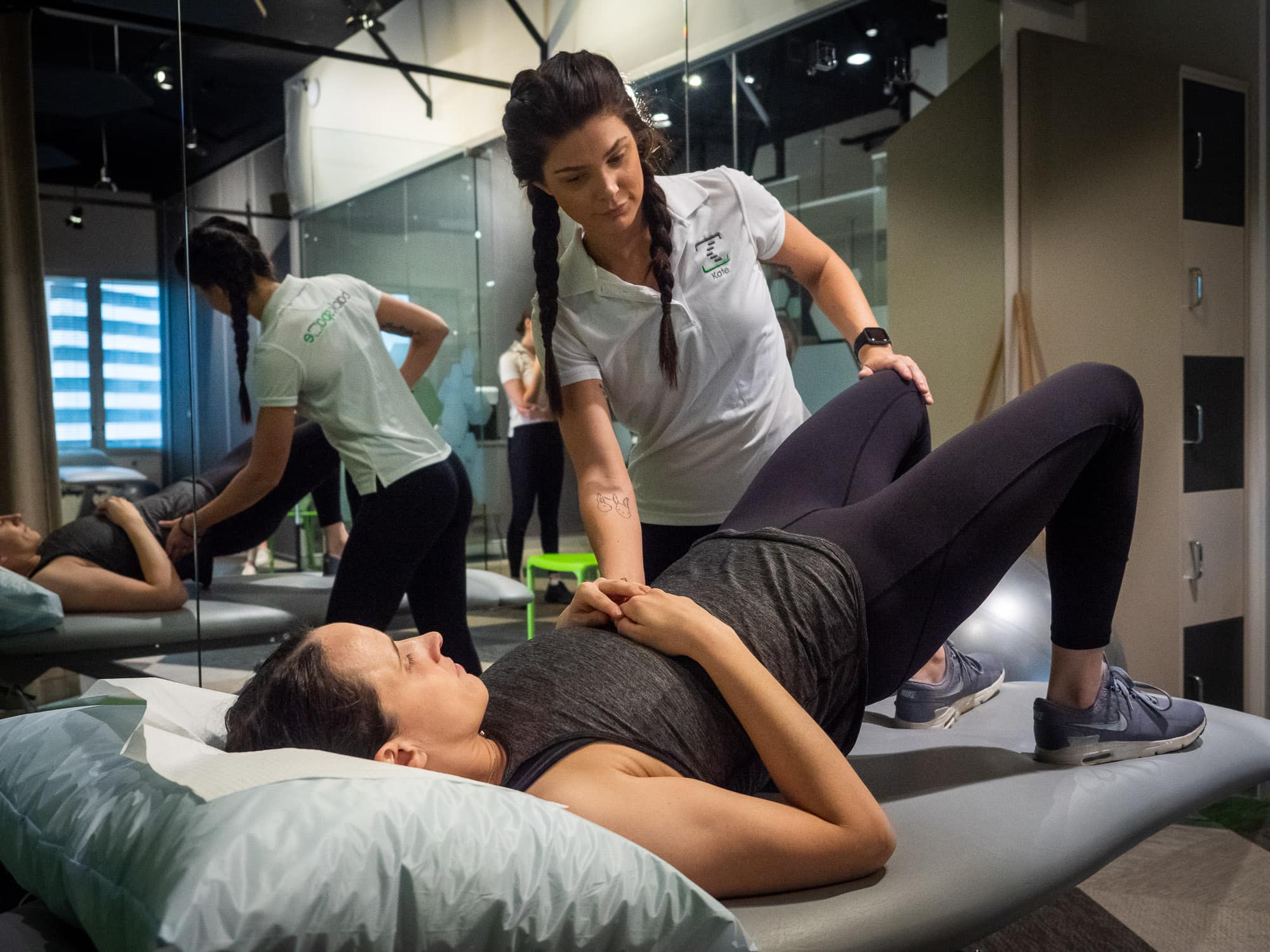
When you hear spinal muscles and stability, the first thing that may come to mind is a term called the core. In this blog, we’ll explore the historical perspective of the core and debunk common myths around the core and if the term core is appropriate when discussing spine rehabilitation.
The term core has traditionally been referred to as a grouping of muscles in the trunk region. These muscles include the transverse abdominis, internal and external obliques, multifidus, the diaphragm, and the pelvic floor. Historically, this region of the body has sometimes been thought of as a cube that holds the body upright and stabilizes the spine. Within this region, one of the most researched muscles is the transverse abdominis. The transverse abdominis muscle is the muscle that sits at the front or anterior side of the body. It is located underneath the rectus abdominis, sometimes commonly known as the six-pack muscle. Interestingly, there is considerable misinformation and education around the rectus abdominis, with people often thinking a strong core means a well-defined 6 pack.
This couldn’t be further from the truth.
In fact, the rectus abdominis has no role in abdominal bracing or rather flexes the spine. On the other hand, the transverse abdominis does have a role in abdominal bracing. What has typically been observed in those who suffer from lower back pain is delayed transverse abdominis activation when performing rapid arm movements. An example of this in lower back pain is we see similar timing of shoulder and transverse abdominis activity whereas in healthy controls, transverse abdominis activity is prior to the shoulder muscles activating. This is a feedforward activation of transverse abdominis which is presumably to stabilize the spine in preparation for movement and the proper control of this muscle has since been targeted in lower back pain – the motor control approach. However, it is unknown if this pattern of activity occurs prior to the onset of low back pain, i.e. is the cause or occurs as a result of lower back pain, i.e. as a symptom.
The motor control approach typically begins with palpation of the transverse abdominis, which is actually very difficult given its depth. The practitioner or the patient will feel for its activity when sucking in the navel. The motor control approach to back pain rehab initially involves teaching people to recruit transverse abdominis voluntarily e.g. sucking the navel to the spine which is also known as hollowing. Various fitness industry gurus have misunderstood this and proposed that hollowing is a good strategy for use while lifting. Hollowing provides far less stability than bracing techniques, which is a much safer position for the spine.
Now that we have spoken about the core and its proposed relationship with lower back pain, we will question whether the word core is even appropriate terminology and whether the historical learnings are relevant in the modern world of lower back pain.
The word core can sometimes be synonymous with apples, a building, or the earth. With each example having an association of structural integrity and stability. When a practitioner uses the word weak core, this can set a negative expectation for a patient and feel as though their spine is broken and not fixable, which is completely untrue. The spine is inherently stable and well supported by the surrounding muscles and ligaments. This is particularly relevant in nonspecific lower back pain. The evidence on the involvement of the core in nonspecific lower back pain is changing and therefore our understanding of rehabilitation is shifting as well.
More recent evidence has shown in nonspecific lower back pain that there’s increased co-contraction stability of trunk muscles, and we find that there is an inability of the back muscles to relax with guarding of spinal movement. We see hyperactivity of trunk muscles such as the erector spinae, multifidus, pelvic floor, and transverse abdominis particularly in nonspecific chronic lower back pain and pelvic girdle pain disorders. We see a tendency for early onsets of anterior lateral abdominal wall muscles during rapid arm movements rather than timing delays. In some cases, trunk muscle hypertrophy such as muscles of multifidus and quadratus lumborum have been documented in some sport populations who have lower back pain. Rather than having the muscles atrophy and become smaller, we find that sometimes there can be hypertrophy. There’s emerging evidence for a lack of association between the density of lumbar multifidus and lower back pain and a lack of association between the actual timing of transverse activation and multifidus cross-sectional area as a predictor of positive outcomes. We have a mixture of evidence from historical studies that is now starting to change our thoughts a little bit.
So, with this in mind, the more appropriate term to use is muscles of the trunk and remove the misuse of the term core.
How do these more recent findings relate to pre and post-surgery?
Post spinal surgery patients require more investigation. It’s hypothesized that under acute trauma, i.e. Spinal fracture or surgery, or when significant pathology is present that requires surgery, that a trunk-based rehabilitation program is appropriate. Additionally, we know that pelvic floor exercises, which is part of the pelvic girdle have an integral role in assisting with urinary incontinence, which is particularly important for men who may be going through prostate cancer or women who may be having urinary incontinence post-pregnancy.
So, the paradigm of the core is shifting however, the jury is still not out. In some applications, trunk-based exercises that target transverse abdominis and multifidus are warranted. We shouldn’t discredit the role that Transvestic dominance has in certain populations and conditions, but most importantly we must be cognisant that the core isn’t always the explanation to the cause or prevention of lower back pain.

Justin Holland
Justin is the Course Coordinator and Lecturer at the Queensland University of Technology, School of Exercise and Nutrition Sciences. He specialises in the rehabilitation of musculoskeletal and neurological conditions. Justin is an Accredited Exercise Physiologist (AEP) with 8 years of experience working in a variety of clinical, corporate, and sporting organisations.
See our list of contributors
